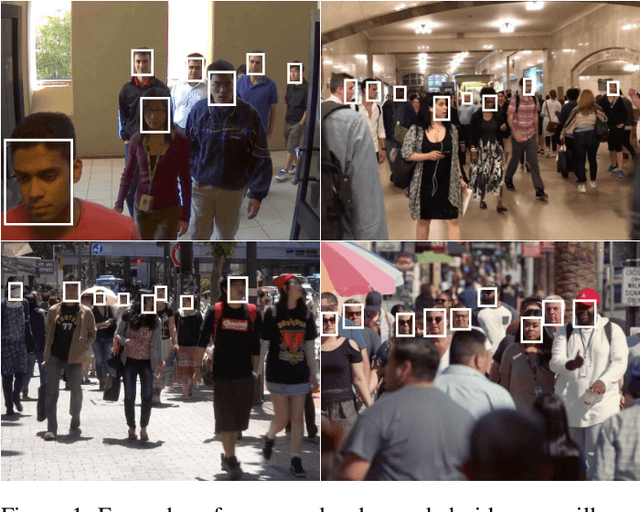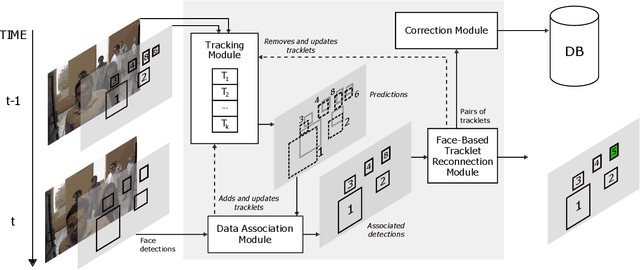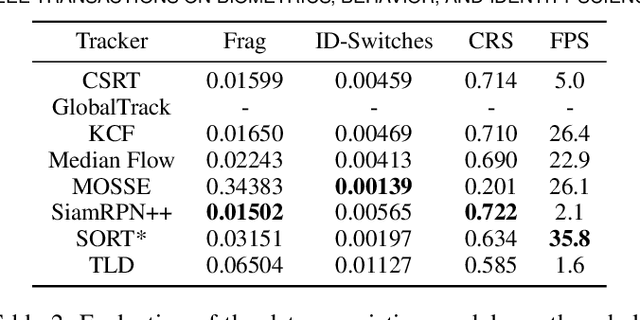Rank-based verification for long-term face tracking in crowded scenes
Paper and Code
Jul 28, 2021



Most current multi-object trackers focus on short-term tracking, and are based on deep and complex systems that often cannot operate in real-time, making them impractical for video-surveillance. In this paper we present a long-term, multi-face tracking architecture conceived for working in crowded contexts where faces are often the only visible part of a person. Our system benefits from advances in the fields of face detection and face recognition to achieve long-term tracking, and is particularly unconstrained to the motion and occlusions of people. It follows a tracking-by-detection approach, combining a fast short-term visual tracker with a novel online tracklet reconnection strategy grounded on rank-based face verification. The proposed rank-based constraint favours higher inter-class distance among tracklets, and reduces the propagation of errors due to wrong reconnections. Additionally, a correction module is included to correct past assignments with no extra computational cost. We present a series of experiments introducing novel specialized metrics for the evaluation of long-term tracking capabilities, and publicly release a video dataset with 10 manually annotated videos and a total length of 8' 54". Our findings validate the robustness of each of the proposed modules, and demonstrate that, in these challenging contexts, our approach yields up to 50% longer tracks than state-of-the-art deep learning trackers.
 Add to Chrome
Add to Chrome Add to Firefox
Add to Firefox Add to Edge
Add to Edge